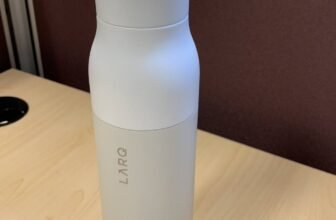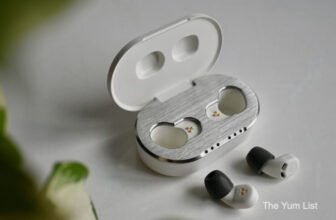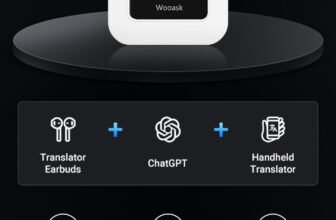What Exactly Does a Smart Ring Do

Smart Rings – Fitness Tracking Without a Smartwatch
When Mark slipped the sleek titanium band onto his finger, he didn’t expect it to change the way he understood his health. He had tried smartwatches before. The bulkiness, the notifications, and the daily charging wore him down. He wanted something simpler , something smart but discreet.
That’s when he discovered smart rings.
What Exactly Is a Smart Ring?
At first glance, a smart ring looks like an ordinary piece of jewelry , polished, minimal, elegant. But beneath its stylish exterior lies a suite of powerful sensors designed to monitor your body’s vital signs and activities.
Smart rings are wearable technology devices worn on the finger. They come equipped with sensors like photoplethysmography (PPG) for heart rate monitoring, accelerometers for activity tracking, and thermistors for temperature changes. These devices are designed to capture essential biometric data 24/7 without drawing attention.
In Mark’s case, his ring tracked his heart rate, sleep cycles, body temperature, activity levels, and even gave insights into his recovery and stress.
Think of it as a condensed version of what a smartwatch offers , just without the screen and wrist clutter.
The Problem a Smart Ring Solves
Smart rings are not just about downsizing tech. They address real frustrations users have with traditional wearables:
-
Comfort and Wearability: Many people find smartwatches too bulky, especially during sleep or workouts. Smart rings are small, light, and barely noticeable.
-
Style: Not everyone wants to wear a smartwatch to work or a formal event. Smart rings blend seamlessly into any style, whether it’s business, casual, or athletic.
-
Distraction-Free Monitoring: With no screen to tempt you with constant notifications, smart rings are perfect for people who want health tracking without digital noise.
-
Battery Life: Smart rings often last 5-7 days on a single charge, significantly longer than many smartwatches that need daily charging.
Mark had never been a fan of checking his wrist every 10 minutes. The ring gave him the peace of mind of knowing he was being monitored , without being reminded of it constantly.
What Can a Smart Ring Do?
A modern smart ring does more than you’d expect from such a tiny device. Here’s what they’re capable of:
-
Heart Rate Monitoring: Track resting, active, and variability in your heart rate (HRV).
-
Sleep Analysis: Measure sleep duration, stages (light, deep, REM), and disturbances.
-
Body Temperature: Monitor trends that can indicate illness or menstrual cycle phases.
-
Activity Tracking: Count steps, track movement, and calories burned.
-
Recovery Readiness: Some smart rings like the Oura provide readiness scores that tell you how rested your body is.
-
Respiratory Rate: Monitor your breathing rate during sleep.
-
Blood Oxygen Saturation (SpO2): Some models include this to check how well your body is absorbing oxygen.
-
Menstrual Cycle Prediction: For users tracking fertility or menstrual health.
Each morning, Mark received a summary in the app , how well he slept, if he had recovered from yesterday’s workout, and whether today was a good day to push himself physically or take it easy.
What Is the Best Smart Ring?
As of 2025, Oura Ring stands at the top of the smart ring market, and for good reason.
🔹 Oura Ring (Gen 3 and Gen 4)
-
Design: Sleek, available in various finishes (silver, gold, black).
-
Sensors: Heart rate, temperature, SpO2, 3D accelerometer, gyroscope.
-
Battery Life: Up to 7 days.
-
Features: Sleep tracking, activity, readiness score, menstrual cycle prediction, meditation guidance.
Other top contenders include:
🔹 Ultrahuman Ring Air
-
Focuses on metabolic health and performance.
-
Emphasizes recovery, strain, and sleep quality.
-
Ultra-light design and intuitive companion app.
🔹 Circular Ring
-
Includes customizable smart alerts and sleep/energy optimization tips.
-
Designed with a subscription model that personalizes user insights.
🔹 Prevention Circul+
-
Marketed for its ability to measure blood pressure, SpO2, and even ECG.
-
More focused on cardiovascular and medical-grade tracking.
Each of these has its strengths, but Oura Ring remains the gold standard, especially for those prioritizing sleep and recovery.
Are Oura Rings Worth It?
In Mark’s experience, absolutely.
Oura has managed to strike a balance between powerful health tracking and minimalistic design. The app’s insights were genuinely helpful , not just raw data, but contextual feedback. For example, instead of simply showing that his resting heart rate was elevated, it suggested he might be overtraining or that his body was fighting off an illness.
But there’s a caveat: Oura Rings require a monthly subscription ($5.99/month as of 2025) to access most of their features.
Pros:
-
Best-in-class sleep tracking.
-
Elegant and durable design.
-
Great battery life.
-
Useful health insights and scores.
Cons:
-
Pricey ($299–$399).
-
Subscription required for full functionality.
If you’re someone who wants to optimize sleep, recovery, and daily performance , without being tethered to a screen , then the Oura Ring is a worthy investment.
Disadvantages of Smart Rings
Despite their benefits, smart rings aren’t perfect.
1. Limited Screen-Free Interaction
You can’t view metrics directly on the ring (no display). You need to access the companion app.
2. Fitness Tracking Limitations
While smart rings are great for sleep and daily movement, they lack the advanced exercise tracking features of devices like Garmin or Apple Watch (e.g., GPS tracking, heart rate zones during workouts).
3. Durability Concerns
While most are water-resistant, extreme sports, heavy lifting, or rugged environments can damage them.
4. Subscription Models
Most smart rings , especially Oura and Circular , now require monthly subscriptions to unlock advanced insights. Some users see this as an unfair paywall after purchasing an expensive device.
5. Limited Call/Message Functions
You cannot answer calls on most smart rings. They are not replacements for smartwatches or phones in that regard. The focus is health, not communication.
6. Blood Pressure Monitoring Is Rare
Few rings like Prevention Circul+ claim to monitor blood pressure, but accuracy is still under question. Most leading smart rings do not yet support this feature reliably.
Can You Answer Calls on a Smart Ring?
In short: No , at least not with current mainstream models like Oura or Ultrahuman.
Smart rings do not come with microphones or speakers, so you can’t talk on them or listen to anything. Some conceptual or niche rings (like the limited Echo Ring prototypes) have explored haptic call features, but nothing commercially mainstream has made this viable yet.
So, if your priority is handling communication, you’re better off with a smartwatch.
Do Smart Rings Require a Subscription?
Yes, most do. Here’s a quick breakdown:
| Ring | Subscription Required? | Monthly Cost |
|---|---|---|
| Oura | Yes | $5.99 |
| Ultrahuman | No (as of early 2025) | $0 |
| Circular | Yes | ~$4.99 |
| Circul+ | No (lifetime license model) | $0 |
The subscription generally unlocks personalized insights, historical data, trend analytics, and AI-driven recommendations.
Which Finger Should You Wear a Smart Ring On?
The optimal finger is typically the index or middle finger , and on the non-dominant hand.
Why?
-
These fingers provide more consistent blood flow and sensor contact.
-
Less motion artifact than the thumb or pinky.
-
Reduced interference from frequent hand movements (e.g., writing or typing).
Mark wore his ring on his left index finger, and it consistently gave better readings than when he experimented with other fingers.
The Future of Smart Rings
The technology behind smart rings is advancing rapidly. In the near future, we can expect:
-
More medical-grade diagnostics (like ECG and real-time BP).
-
Better battery life with advanced materials.
-
Expanded gesture controls (maybe call silencing or app control via finger taps).
-
Integration with AR/VR environments, especially with the rise of spatial computing.
Mark’s experience mirrored what many users report , a renewed connection to their body’s rhythms. Over time, he found himself naturally syncing his routines to what his ring told him. He went to bed earlier, trained smarter, and felt healthier. He didn’t need a flashy screen to stay informed , just a smart little band that did all the talking in the background.
Should You Buy a Smart Ring?
Ask yourself:
-
Do you want deep health insights without the screen distractions?
-
Are you uncomfortable wearing bulky smartwatches 24/7?
-
Do you want a minimal, stylish alternative that quietly gathers health data?
If the answer is yes, then a smart ring , especially the Oura Ring or Ultrahuman , might be your perfect fit.
But if you want real-time metrics during a workout, navigation, or media controls , a smartwatch still wins in terms of interactivity.
TL;DR Summary
-
Smart rings are powerful fitness and health trackers in a small, stylish form.
-
They track sleep, heart rate, temperature, SpO2, and activity.
-
Oura Ring is the leading choice, but options like Ultrahuman and Circular are emerging.
-
Most require subscriptions to unlock full features.
-
They do not support calls or messaging like smartwatches.
-
Ideal for those who value minimalism, comfort, and recovery-focused health data.
-
Best worn on the index or middle finger of the non-dominant hand.
As the world moves toward more discreet and intelligent wearables, smart rings are carving a new niche , one where less screen time leads to more meaningful wellness. Whether you’re an athlete, a biohacker, or someone simply curious about your health, the smart ring might just be your next small , but mighty , companion.





